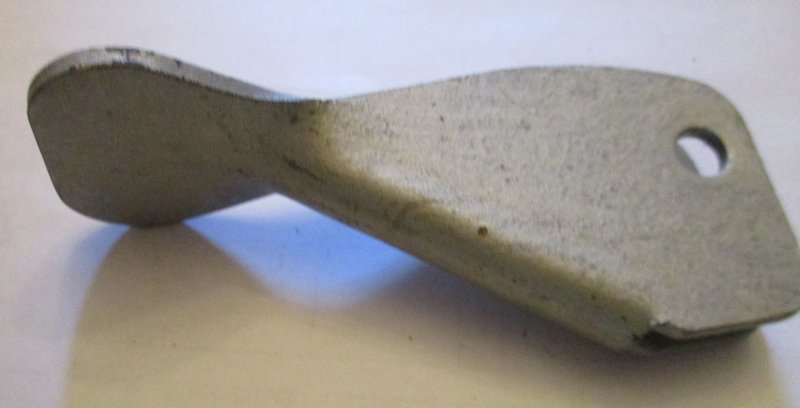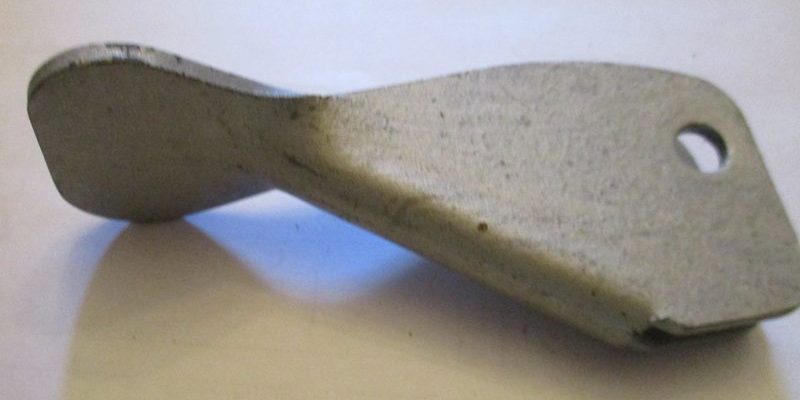
Thumb latches on entry handlesets might look sturdy, but they take a daily beating. Over time, screws and other parts loosen, which can make the latch feel sloppy—or stop working altogether. If you’re looking at your loose thumb latch and thinking, “How on earth does this work? Can I fix it myself?”—the answer is yes, and you’ll probably save yourself a chunk of change in the process.
What Causes a Handleset Thumb Latch to Become Loose?
Here’s the thing about thumb latches: even on high-end brands, repeated use will slowly work the screws loose. Just like a wobbly dining chair that needs an occasional tightening, your door’s handleset needs attention every now and then. But what actually causes these things to come loose, and does it vary between brands?
Common factors include:
- Vibration from opening and closing: Each time you use the door, the mechanism shifts and tiny movements can back screws out.
- Environmental changes: If you live somewhere with big temperature swings, things expand and contract, which can loosen fittings.
- Improper installation: Sometimes, the installer (or even you) doesn’t tighten things enough at the start—especially with generic brands that have unclear instructions.
- Wear and tear: Parts inside the latch, or even the screw holes in your door, can wear out, making it hard for things to stay tight.
Honestly, no handleset is immune—Kwikset, Schlage, Baldwin, and those “mystery brand” generics all suffer the same fate eventually. The trick is catching it early before things wear out or break.
How Does a Thumb Latch Work (and Why Does That Matter)?
Let me explain: Thumb latches on handlesets aren’t as complicated as they look. At their core, you’ve got a metal plate on the outside, a thumb piece you push down (that’s the “thumb latch”), and an internal rod or spindle that goes through the door to operate the latch bolt. When you push the thumb piece, it moves the internal rod, which retracts the latch, letting you open the door.
Now, here’s why understanding this matters: If the screws holding these parts aren’t tight, the thumb latch will wiggle or feel like it’s not catching. Sometimes, the internal rod slips out of its socket, or the plate itself pulls away from the door. That’s why diagnosing the looseness—figuring out *which* part is moving—is such a helpful first step.
For specific brands:
- Kwikset and Schlage: These often use hidden screws on the interior side, with a decorative plate that snaps off.
- Brands like Baldwin: May use through-bolts that run straight from the inside to the outside for extra stability.
- Generic/unbranded handlesets: You might see visible screws, or even odd, oversized fasteners, sometimes with wonky fitment.
If you don’t know your brand, check for logos on the latch or inside the door edge, or take a clear photo for a quick online search.
Tools You’ll Need to Fix a Loose Handleset Thumb Latch
Before you start pulling things apart, take a second to grab the right tools. Seriously, the difference between a quick 10-minute fix and an hour of frustration usually comes down to having the right screwdriver or Allen key.
Typical tools you’ll need:
- Phillips screwdriver: Most common for handleset screws.
- Flathead screwdriver: Helpful for prying off decorative covers.
- Allen wrench (hex key): Some brands, especially Schlage, use these for hidden set screws.
- Needle-nose pliers: Good for gripping small parts or extracting stripped screws.
- Optional: A flashlight, small container for screws (seriously, they love rolling away), and a little WD-40 for sticky mechanisms.
You *don’t* need fancy locksmith tools or special gadgets. Most fixes rely on basic hand tools you probably already own.
Step-by-Step: Tightening a Kwikset, Schlage, or Generic Thumb Latch
Now, let’s get hands-on. Here’s how to fix a loose handleset thumb latch, whether it’s a mainstream brand (like Kwikset or Schlage) or a generic one you picked up on sale.
1. Inspect and Identify the Loose Spot
- Wiggle the thumb latch and handle. Is the whole exterior plate moving, just the thumb piece, or both? This helps you know what to focus on.
- Look for screws (often hidden under a decorative plate on the inside of the door).
2. Remove the Inside Plate or Cover
- Use a flathead screwdriver to pry off the interior cover gently.
- If you see visible screws, just unscrew them. If not, look for a small set screw on the neck of the inside lever (where it meets the door).
3. Tighten the Mounting Screws
- Once the interior cover is off, you’ll see the mounting screws holding the outside plate and thumb latch together.
- Use the Phillips screwdriver (or Allen wrench, depending on your brand) to tighten these screws until snug—but don’t overtighten. Too much force can strip the wood or crush delicate parts.
4. Test the Latch Mechanism
- Before reassembling, press the thumb latch a few times and open the door. It should feel solid and move smoothly, without extra wiggle.
- If anything still feels loose, double-check for missed screws or stripped screw holes.
5. Reattach Covers and Handles
- Snap or screw the interior cover back into place.
- Test everything again—better to fix it now than repeat the process.
Honestly, the whole process is a lot less intimidating than it sounds.
Brand Differences: Kwikset vs Schlage vs Generic Handlesets
You might be wondering: Are there any real differences between fixing a loose handleset from Kwikset, Schlage, or a generic brand? Yes—and no. The core process is the same, but some little details can trip you up.
Kwikset:
- Usually has snap-on or twist-off interior covers that hide the screws.
- Screws often go straight through from inside to outside, making tightening simple.
- If things still feel wobbly after tightening, check for stripped screw holes in the wood or misaligned parts.
Schlage:
- Commonly uses hidden set screws on the handles, sometimes requiring an Allen wrench.
- Some high-end Schlage models use through-bolts, providing extra stability but a little more work to access.
- Always double-check the spindle (the rod going through the door) for correct alignment.
Generic/No-Name Brands:
- Expect more visible screws and sometimes misaligned or off-size screw holes.
- If a part feels flimsy or doesn’t tighten up properly, you may need a washer or even a touch of wood filler to secure worn holes.
- Generic hardware sometimes comes with baffling instructions—don’t be afraid to look up your part number online for diagrams or videos.
In the end, the biggest challenge with generics is inconsistency, while with name brands, it’s mostly about deciphering hidden screws or special fasteners.
What If the Screws Won’t Tighten or the Latch Still Wobbles?
Here’s where things can get tricky. Sometimes, no matter how much you tighten those screws, the latch *still* feels loose. What’s going on?
Common issues:
- Stripped screw holes: The wood inside your door can get worn, especially after years of tightening and loosening the same screws.
- Stripped screw heads: The screw itself has no grip, so it just spins.
- Broken internal parts: If the rod or plate inside the handleset is cracked or bent, tightening won’t help.
What to do:
- For stripped holes: Remove the screw, insert a wooden toothpick (or golf tee) with a dab of wood glue, break it off flush, and re-tighten the screw. This gives the screw something fresh to bite into. Works like a charm!
- For stripped heads: Use needle-nose pliers to grip the screw and turn it, or replace it with a new one from the hardware store.
- For broken or bent parts: If you see obvious damage inside the handleset (like a snapped rod), you might need a replacement part. Most hardware stores or locksmiths can help match the piece—even for generics, since many internal parts are surprisingly similar.
If you reach the point where nothing seems to work, it may be time to replace the whole handleset. But honestly, nine times out of ten, these simple repairs are all you need.
Maintenance Tips to Keep Your Handleset Thumb Latch Tight
Once you’ve fixed your thumb latch, a little routine care can keep it from getting loose again. This isn’t just about keeping things tight—maintenance helps your door hardware last longer and work better.
Easy ways to prevent a loose handleset thumb latch:
- Check screws every few months: Give each one a quick twist to keep things snug. Mark your calendar or set a reminder if you tend to forget (guilty as charged!).
- Add a tiny drop of thread-locker: For stubborn screws that loosen repeatedly, a drop of blue thread-locker (Loctite) can keep them secure, but still removable.
- Lubricate the mechanism: A quick spray of WD-40 or silicone lubricant on the latch bolt makes operation smoother, cutting down on wear.
- Watch for sagging: If your door is heavy or slightly misaligned, it can tug on hardware and make things loose faster. Adjusting the hinges or adding a door sweep can help.
Regular maintenance doesn’t just prevent problems—it also makes the door feel solid and safe, giving you that satisfying “click” every time you lock up.
When to Replace vs. Repair Your Handleset Thumb Latch
You might be thinking, “Should I really keep trying to fix this, or is it finally time to buy a new handleset?” That’s a fair question. Here’s how I think about it: if the latch is just a little loose and responds to tightening, keep it. But if you see any of the following, consider a replacement.
Signs you may need a new handleset:
- Cracked or broken latch plates or thumb pieces
- Screws or internal rods won’t stay tight, no matter what
- Severe rust or visible damage
- The door itself is damaged around the latch area
Buying the same brand as your old one (like Kwikset or Schlage) usually makes replacement easier, but honestly, most brands have similar installation steps. Be sure to check the backset and hole spacing before ordering a new one if you’re going generic.
If you find yourself re-tightening the same handleset over and over, or if the latch has visible cracks or bends, replacement is almost always the smarter option.
Wrap-Up: A Little Tightening Goes a Long Way
Fixing a loose handleset thumb latch sounds intimidating until you do it once. Whether you’re working with a name brand like Kwikset or Schlage, or a generic set from the hardware aisle, the process comes down to a little careful inspection, the right screwdriver, and a bit of patience. Most issues are solved in under half an hour, and you don’t need a single “special” tool.
The next time your thumb latch wiggles, skip the locksmith and give it a try yourself. A tight, sturdy door handle isn’t just satisfying—it’s a small reminder that a bit of DIY spirit can make your daily routines (and your home itself) feel solid and safe.
